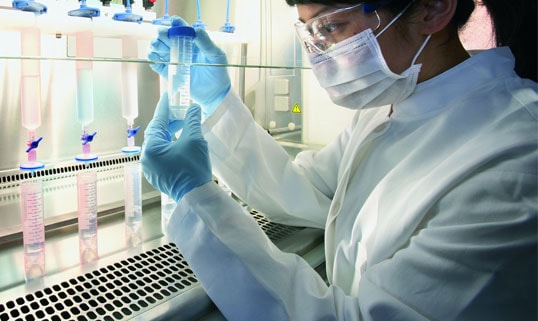Science Talk: problems with immunogenic reporter genes
Betting against immunology: Choosing the right reporter gene for your oncology models
Imanis Life Sciences | Rochester MN
It seems like there’s a lot of confusion about the immunogenicity of tumor models expressing reporter genes. In fact, the question I may get asked the most here at Imanis is probably whether our murine cell lines will grow in syngeneic immunocompetent mice. It doesn’t seem like a hard question: yes or no. But in fact, the answer isn’t all that straightforward, which is probably why there is so much confusion about this topic.
When it comes to growing tumor models in mice, the basic principle is pretty simple: self is good, non-self is bad. So if you want to grow tumors in Balb/c mice, for example, you’d better pick a tumor model initially isolated from Balb/c mice. Of course, there are plenty of tumor models – like all those human ones – that don’t have syngenic mice strains. That’s when immunocompromised mice come in. Because immunocompromised mice lack or have limited immune systems, they don’t reject implanted cells and tumors can grow. Not too confusing yet, right?
Okay. Now, for those of us wanting to use reporter cell lines, there’s an additional factor we have to consider: the reporter itself. A firefly is not a mouse. When our cells express firefly luciferase, we can track them noninvasively in vivo, but the trade off is that the cells are now expressing a non-self protein. And that means that the cells are now immunogenic and might be rejected by immunocompetent mice. So the answer to the question of whether our cells will grow in immunocompetent mice must be no, right? Well, maybe.
There are numerous examples in the literature of people growing luciferase cell lines in immunocompetent mice. And luciferase-expressing cells can form tumors and metastases in immunocompetent mice, in fact they often do so very well. Great, it works! Let’s throw immunology out the window.
Not so fast. The problem is consistency. Some mice do reject the cells and there’s no good way to predict when or how often this rejection will occur – though we have noticed it seems to be a little more common with some models compared to others. And the longer your study goes, the more opportunity for the immune system to mount a response against the immunogenic reporter.
So that’s why I always recommend that cells expressing any immunogenic reporter – luciferase, fluorescent proteins, near-infrared fluorescent protein (iRFP), etc. – or selection genes – puromycin, neomycin, etc. – be used in immunocompromised mice. It’s not that I think the cells are definitely going to get rejected in immunocompetent mice, it’s that I can’t promise consistent results.
So what do you do if you need to use an immunocompetent model? Fortunately, there is a murine reporter available: the murine sodium iodide symporter (or mouse NIS). Because NIS is a self-protein, it doesn’t elicit an immune response in immunocompetent mice. It’s just one of the reasons we love NIS. And for anyone working with other animals, NIS comes in a variety of species specific “flavors”.
But maybe you don’t want to or can’t switch to NIS imaging. Well, then I guess the question you really need to ask yourself is: can I afford to gamble?


